19 Best Apps for Learning Portuguese (Which is Right for You?)

er in Portuguese and only knowing a few words; that moment shows why choosing one of the Top Language Learning Apps matters. From quick vocabulary drills and spaced-repetition flashcards to complete audio lessons and live conversation practice, apps can speed your progress, whether you aim for Brazilian or European Portuguese. This article compares the best apps for learning Portuguese, highlighting grammar practice, pronunciation tools, tutors, and offline lessons, and which options suit beginners, travelers, or serious learners.
To help you reach those goals, Pingo AI offers an AI language-learning app that personalizes lessons, provides instant pronunciation feedback, and creates conversation practice tailored to your level. It works on mobile, supports focused vocabulary building and spaced-repetition review, and makes it easy to practice Portuguese every day.
Summary
- Choosing the right app is strategic because Portuguese reaches a massive audience, with over 200 million speakers worldwide, and Portuguese ranks as the 6th most spoken language, so prioritizing tools that build fundamental conversational skills matters.
- Passive recognition methods leave a gap in usable speech, and personalized learning paths close that gap: 90 percent of users report improved language skills when practice is tailored to their actual errors.
- Practice structured as short, production-focused blocks improves transfer to conversation; for example, keep roleplay blocks to 8 to 12 minutes and target at least 40 percent of session time on speaking.
- One-week app experiments reveal functional quality beyond hype, since metrics like over 500,000 downloads and a 4.5-star average rating signal adoption and satisfaction. You still must confirm that the app delivers spoken role-play feedback.
- Scenario-driven micropractice produces rapid outcomes. Learners using focused scenario cards handled 80 percent of everyday interactions by day ten in a two-week coaching plan.
- AI-driven feedback supports habit formation, with language-learning apps featuring AI tutors showing a 60% higher retention rate than non-AI alternatives.
- This is where Pingo AI's AI language-learning app fits in, addressing the recognition-to-production gap with conversation-first role-plays, instant corrective feedback, and adaptive practice tailored to the errors learners actually make.
19 Best Apps for Learning Portuguese
These are the 19 best apps to learn Portuguese, each described in terms of what it actually trains, who it helps most, and the trade-offs to expect.
1. Pingo AI

Pingo AI stands out by prioritizing live conversation practice over passive drills. It uses expressive conversational AI to simulate everyday scenarios, adapts feedback to your level, and splits learning into Tutor Mode for beginners and adaptive roleplays for advanced learners. Recommend it when your goal is measurable speaking confidence, because it forces production under realistic pressure and gives instant, actionable correction.
2. Memrise
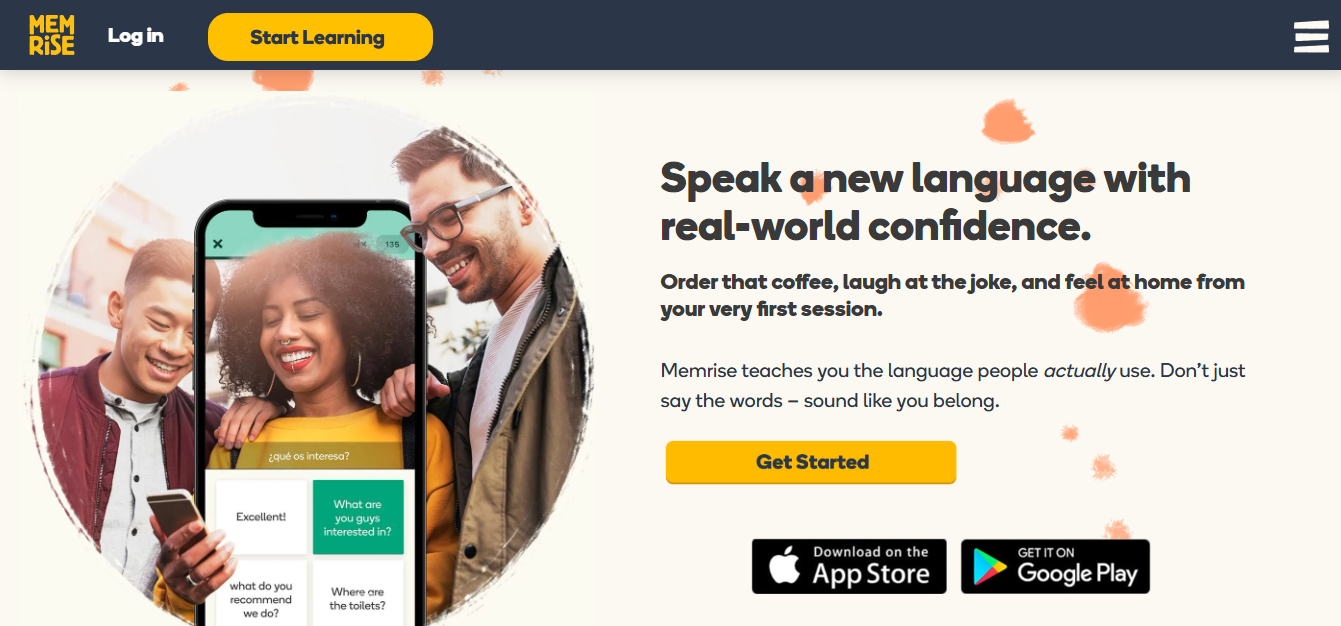
Memrise delivers fast vocabulary gains through spaced repetition and native-speaker clips, making it great for quick recall and listening to authentic accents. When we worked with learners targeting European Portuguese, a pattern emerged.
Memrise teaches recognition efficiently, but frequent upgrade prompts pushed some users to pay to avoid interruptions. Use Memrise for vocabulary foundations, but pair it with speaking practice if fluency is the objective.
3. FluentU (video immersion)
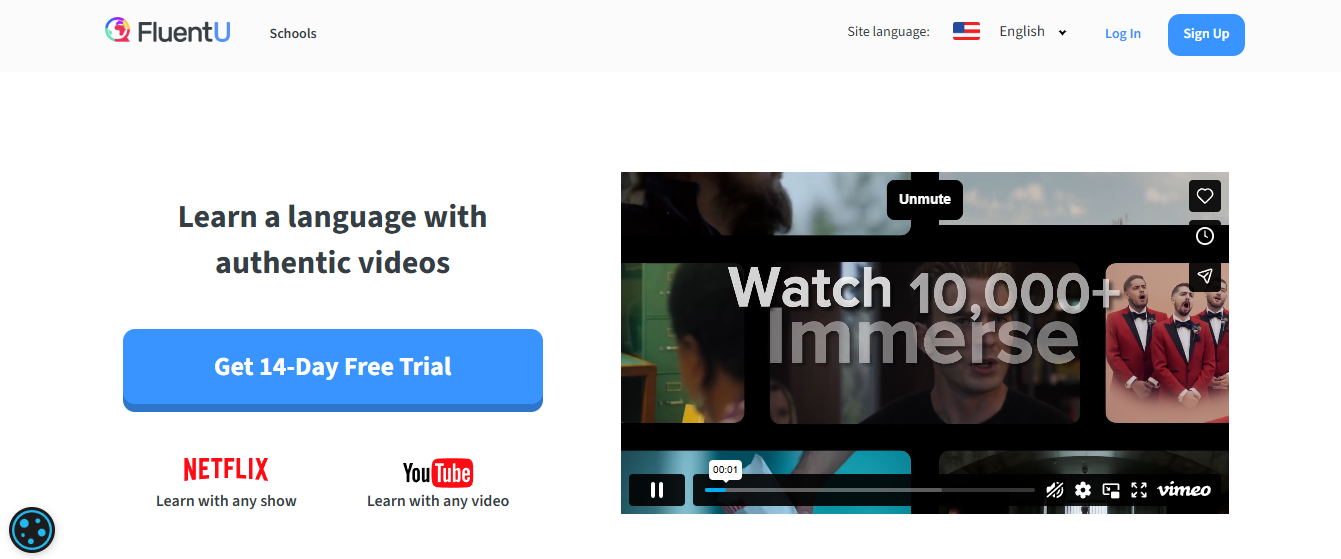
FluentU turns authentic videos into lessons with interactive subtitles and vocabulary tools, so you learn language in context rather than isolated sentences. If you want to link phrases to the way people actually speak on screen, this is the app to use; it accelerates comprehension of colloquial registers and cultural references that textbook drills miss.
4. Rocket Languages
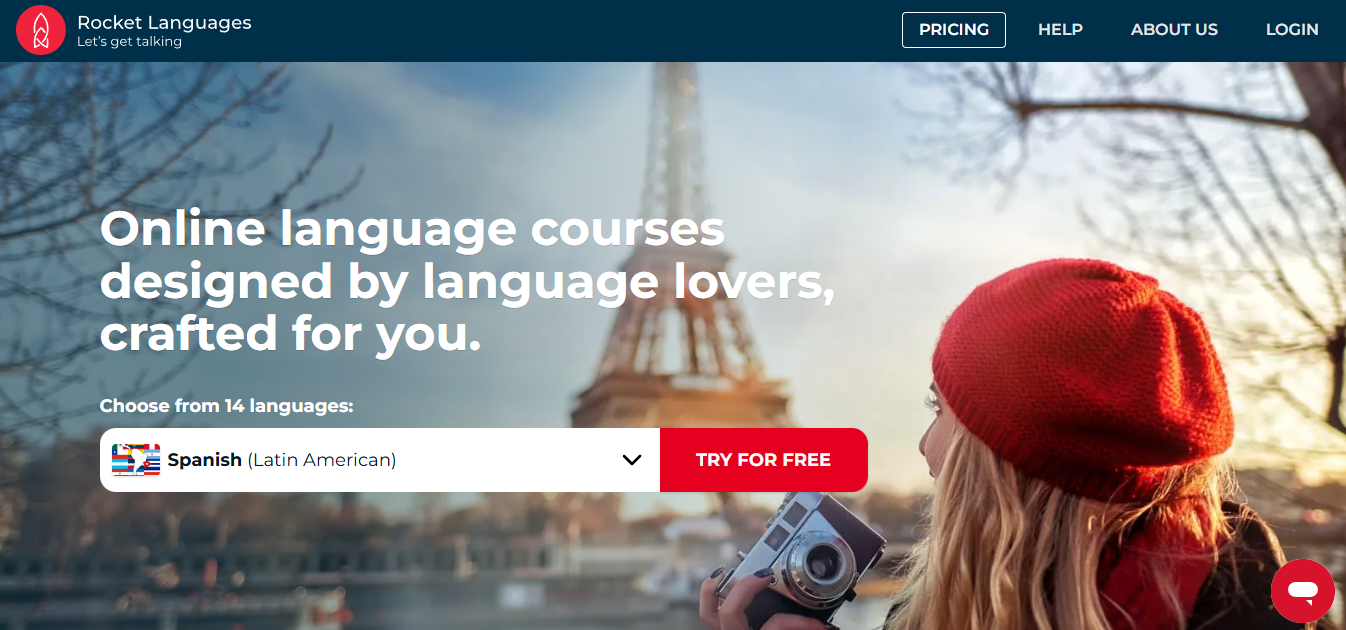
Rocket Languages delivers long-form, structured courses with integrated culture notes and interactive audio. It is best for learners who want a full curriculum that emphasizes conversation through progressive audio dialogues, plus grammar explained within real use cases.
5. Mondly

Mondly blends speech recognition and AR features to gamify speaking practice, which helps reduce the awkwardness of first attempts at pronunciation. It’s beneficial when you need short, daily speaking drills and immediate spoken feedback without booking a tutor.
6. Babbel
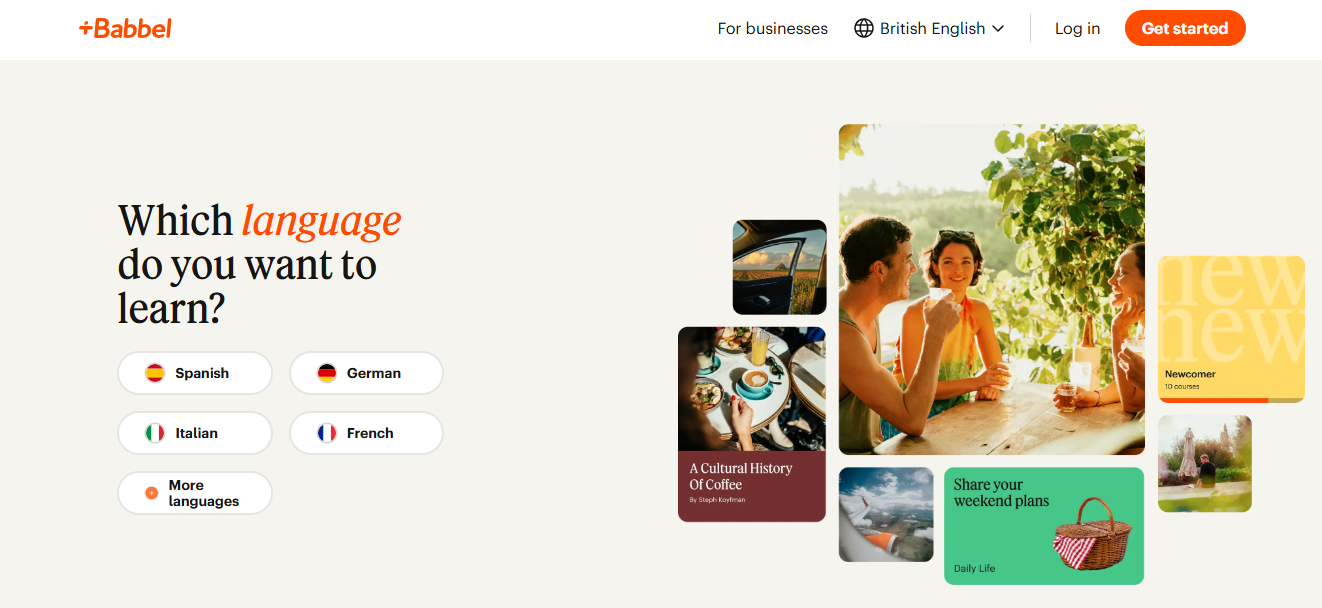
Babbel’s strength lies in its tightly sequenced curriculum, with clear grammar explanations and dialog practice. If you prefer a predictable lesson flow and practical scenarios, ordering food, and making small talk, Babbel will get you there steadily; pair it with an oral practice tool for more production work.
7. Pimsleur
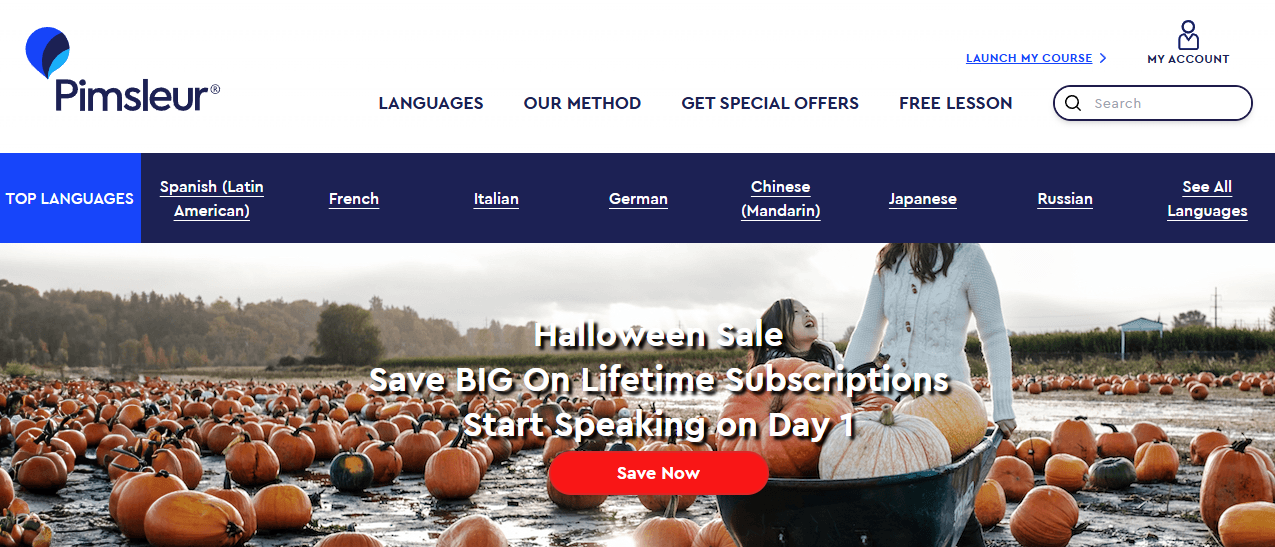
Pimsleur emphasizes audio-first learning with graduated interval recall focused on production, not just recognition. If you commute or want to force yourself to speak aloud, Pimsleur’s spoken-response format builds automaticity in basic conversation faster than passive listening alone.
8. Lingopie
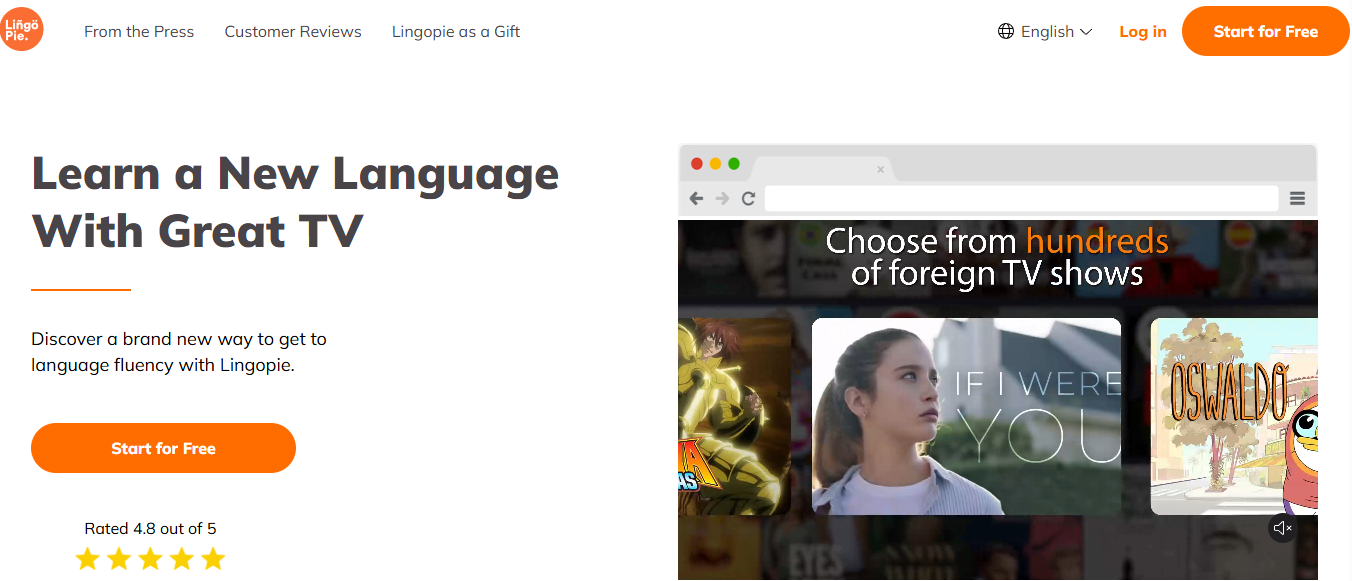
Lingopie teaches through TV shows and movies, giving learners repeated exposure to authentic Portuguese speech rhythms and idioms. It’s ideal for improving listening stamina and learning colloquial vocabulary peeled from natural dialogue.
9. MosaLingua
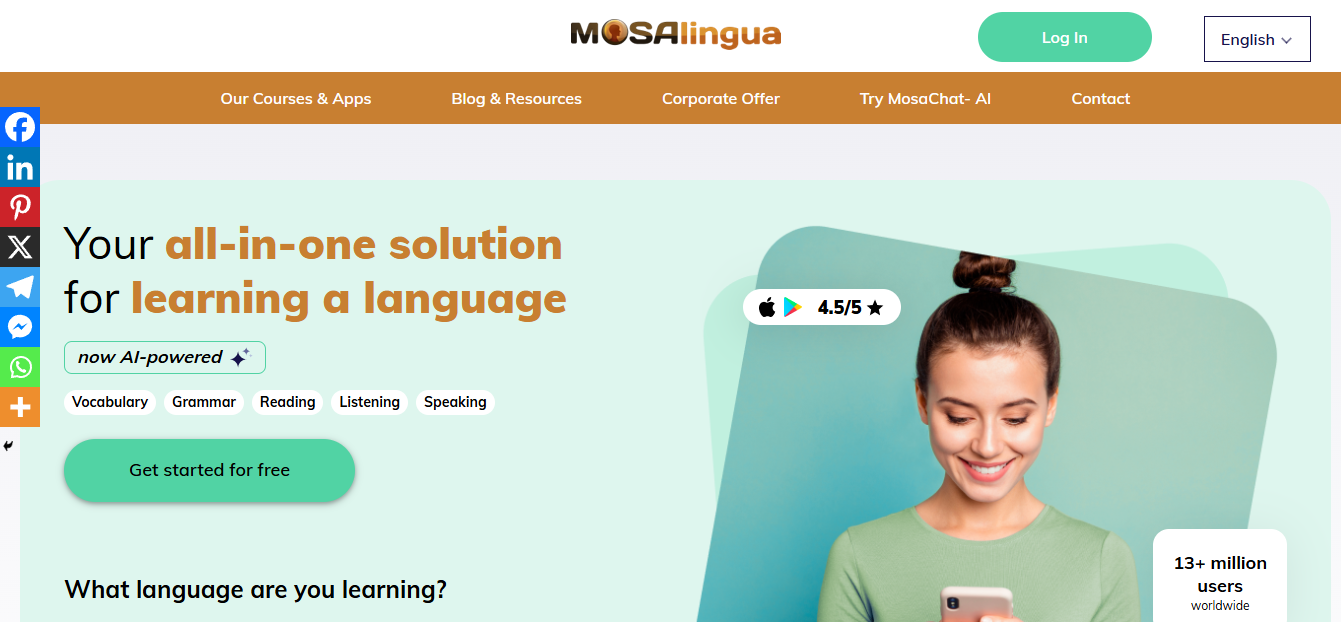
MosaLingua uses spaced repetition and active recall with phrase-centric flashcards, plus pronunciation and short dialogues. When time is limited, it compresses the most valuable phrases into efficient review sessions that nudge retention without demanding long lesson blocks.
10. Drops

Drops focuses strictly on visual vocabulary through microgames and short sessions, making it addictive for building breadth. Use it when you need to expand concrete word banks quickly, but expect to supplement with speaking-focused practice to convert words into usable phrases.
11. Rosetta Stone
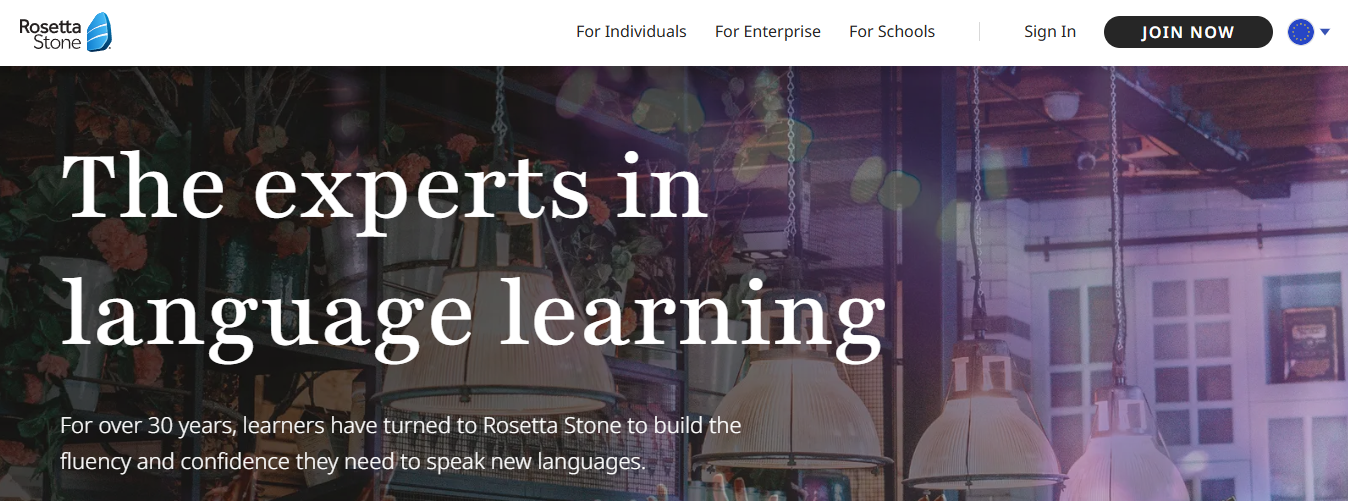
Rosetta Stone offers immersion-style lessons with speech recognition that forces you to match pronunciation, plus a full-language subscription model. It’s a good baseline for accent training and continuous immersion, though it’s paid-only and less targeted for roleplay-style conversation.
12. HelloTalk
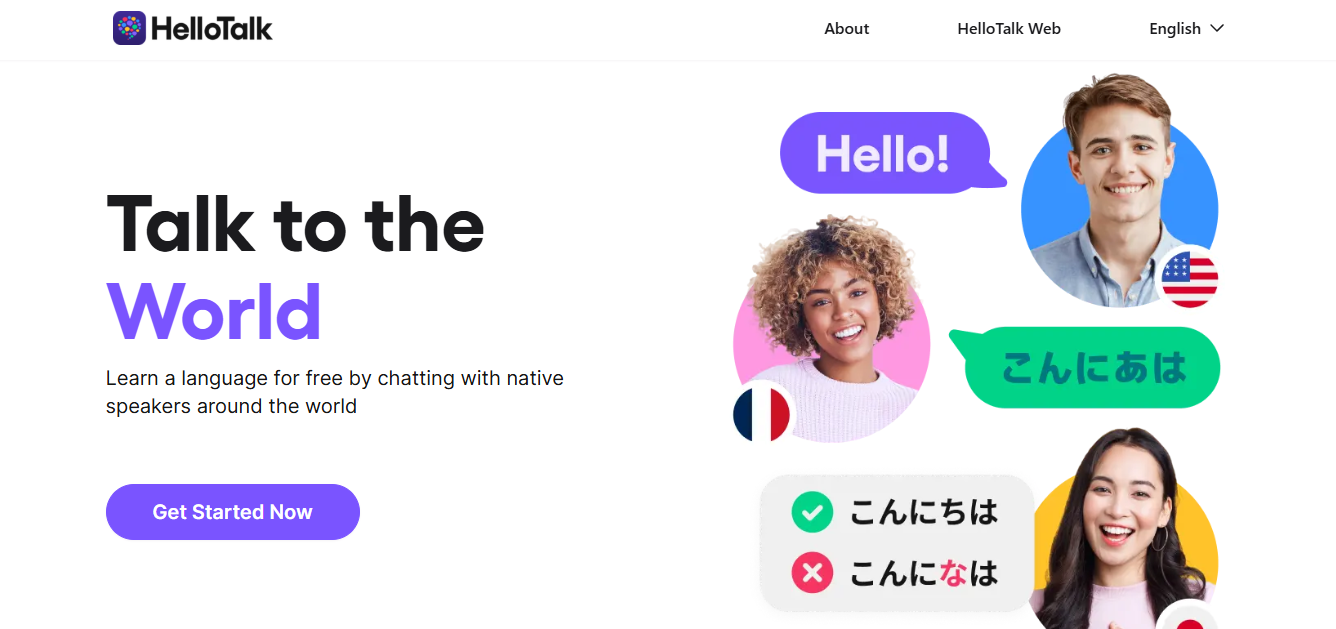
HelloTalk connects you to native speakers for text, voice, and video exchanges, letting you practice authentic back-and-forth and get corrections from real people. If your priority is cultural nuance and live feedback from native speakers, HelloTalk is a direct route, but it requires social effort and careful partner selection.
13. LingQ
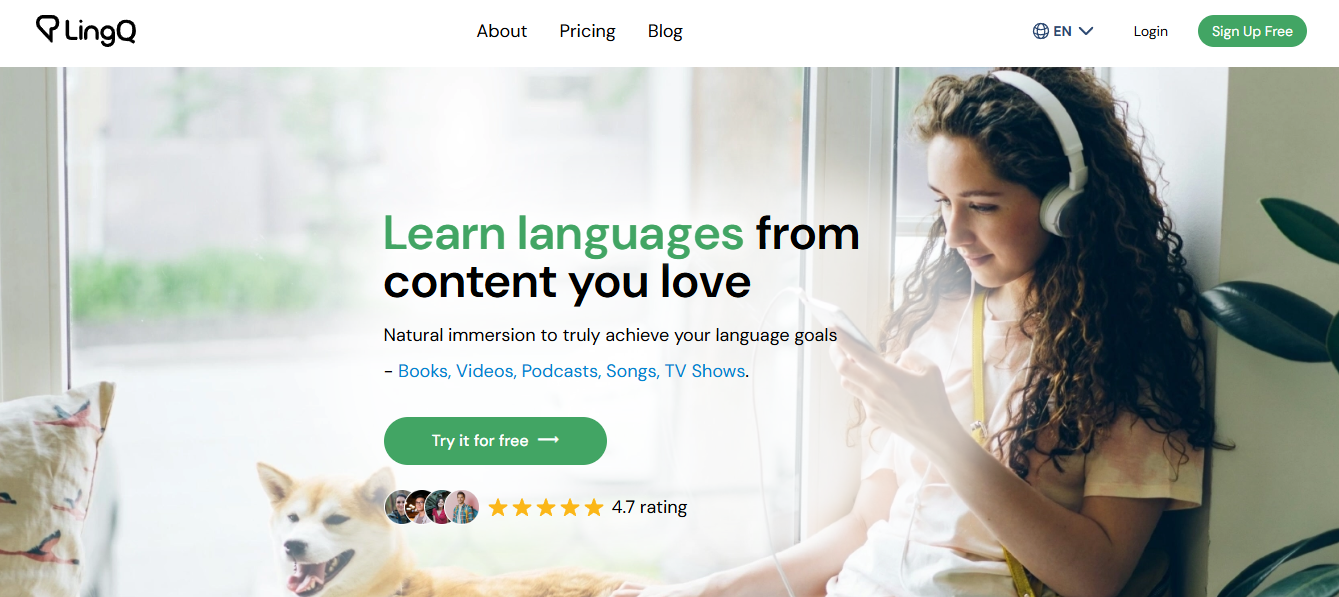
LingQ supplies an extensive library of graded texts and audio with tools to convert unknown words into study items. It is the app for learners who prefer reading and listening to build vocabulary through context, and who want slow, deliberate exposure to authentic content.
14. Italki

Italki matches you with human tutors for one-on-one lessons tailored to your goals, accents, and dialect choice. When targeted feedback and speaking time matter most, Italki gives you direct coaching, but it costs per lesson and scales linearly with your budget.
15. PortuguesePod101

PortuguesePod101 delivers podcast-style lessons covering a wide range of levels and cultural topics. It works well for intermittent learners who want narrative-driven lessons with downloadable audio and optional supplementary materials.
16. FluentU (alternate angle)
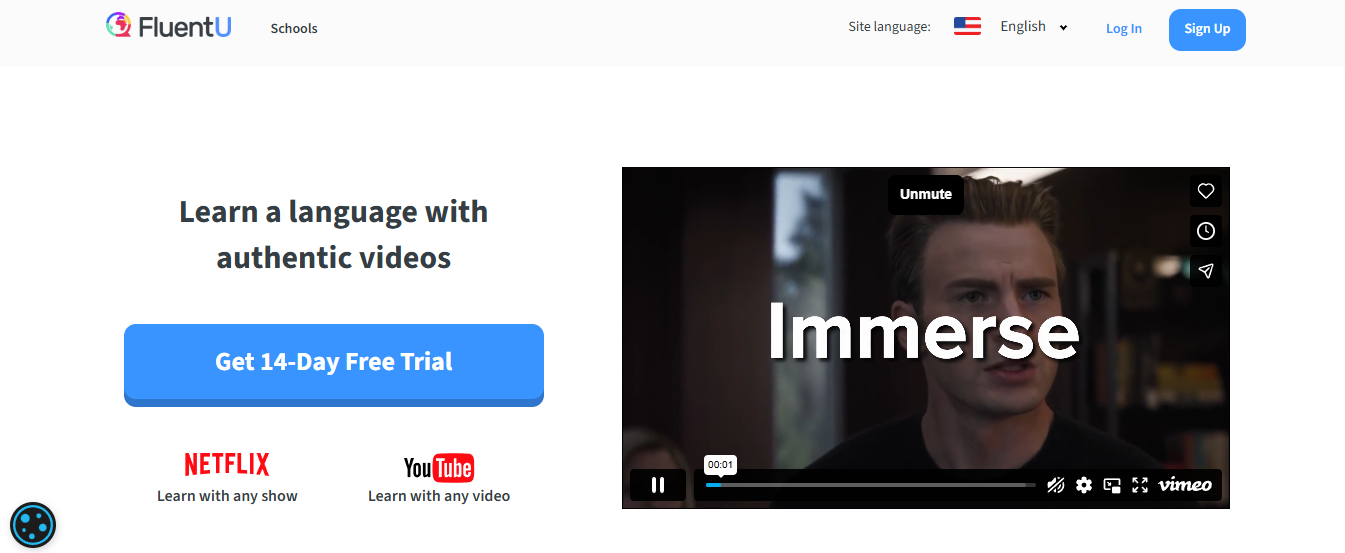
FluentU also serves as a searchable video library where you can build custom playlists and review vocabulary at spaced intervals, making it useful for both passive cultural immersion and active study sessions. Think of it as a bridge between entertainment and structured learning.
17. Ouino Portuguese

Ouino offers a highly customizable program focused on Brazilian pronunciation, including Portuguese variants in its grammar modules, with lifetime access for a single purchase. If you want an adjustable self-study system that targets verb conjugation and pacing of repetition, Ouino is cost-efficient and deep.
18. LingoClip
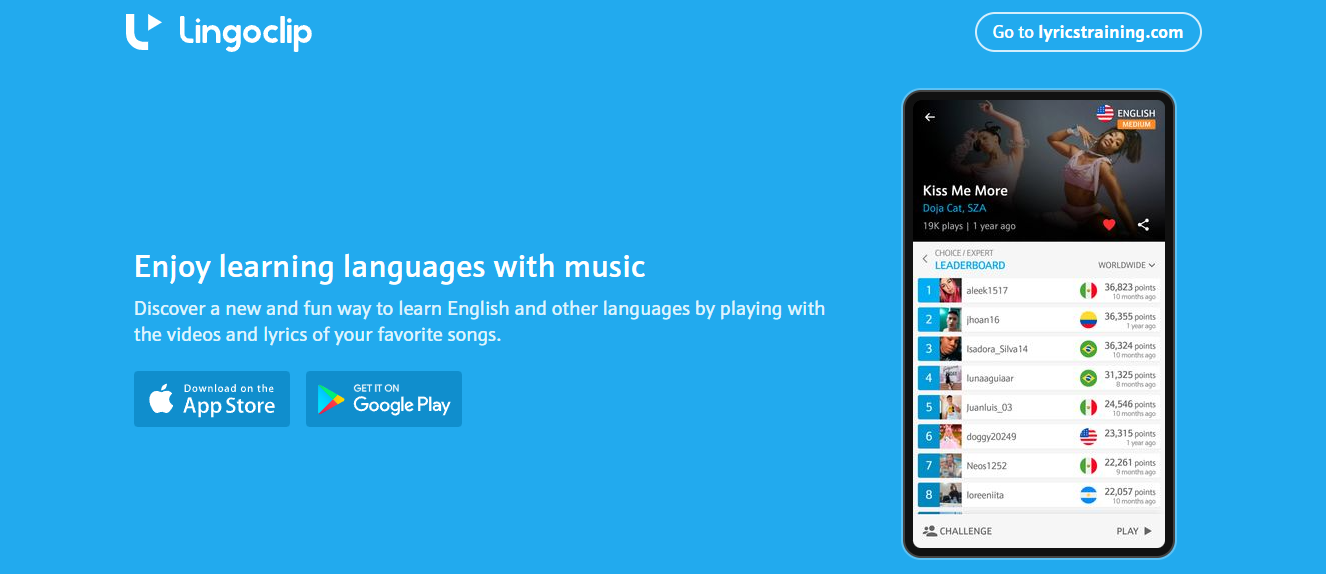
LingoClip teaches European Portuguese through music, letting you follow lyrics, see translations, and practice pronunciation along the track. Music quickly trains your ear to rhythm and stress patterns, which is why musicians and language learners often close gaps faster when they use songs.
19. Reverso

Reverso is a contextual translation and example-sentence tool that exposes how words operate in real sentences and flags differences between European and Brazilian usage. Use it when you need nuance, collocation checks, or multiple authentic examples for a tricky phrase.
Related Reading
- Babbel vs Duolingo
- How Much Is Duolingo Max
- How Much Does Babbel Cost
- Rosetta Stone vs Duolingo
- Best Apps to Learn Spanish
- Best Apps to Learn Japanese
- Busuu vs Duolingo
- Duolingo Alternatives
How to Make the Most of a Language Learning App

Design your app time like a short, measurable training block that forces spoken output, harvests the exact errors you make, and turns those errors into the next session’s practice. Treat feedback as the engine that moves you from recognition to usable speech, not as decoration.
How Do You Build a Production-Focused Practice Block?
Start with a clear micro-goal, then run three focused segments. A rapid retrieval warmup, a pressured roleplay where you must speak without pausing, and targeted error drills based on what broke in the roleplay.
Think of It Like a Gym
Warm the joints, lift heavy for a few reps, then isolate the weak muscle. Keep each block to 8–12 minutes so you can repeat it several times a day without friction.
What Should You Capture and Study After Each Block?
Record two things every session. The single sentence you felt weak on, and the correction that made it sound natural. Turn those into one-line drill cards you can review in 2-minute bursts. When you convert mistakes into curated practice items this way, you avoid chasing random vocabulary and instead close the gap between performance and fluency.
Why Does Authentic Voice Quality Matter So Much?
This pattern appears across apps and tutor platforms. Synthetic or robotic audio works until learners must parse nuance, speed, or emotion, at which point comprehension slips. Users prefer real voice actors because natural prosody and subtle stress patterns reveal how native speakers actually chunk phrases, which accelerates usable listening and speaking skills.
How Do You Practice Conversation Repair So You Stop Freezing?
Train repair phrases as actions, not as vocabulary. Spend one session rehearsing three rescue moves, for example, asking someone to repeat, paraphrasing, and requesting a slower rate. Then simulate failure and force yourself to recover from a misunderstanding within 30 seconds. Rehearsing recovery reduces the paralysis that turns small mistakes into conversation-stoppers.
What Metrics Should You Track That Actually Mean Something?
Measure the percent of time you spend producing speech during a session, the number of successful repairs per roleplay, and a weekly self-rating of confidence on a specific task, like ordering coffee in Portuguese. These metrics show functional gains, not gamified points.
According to Abblino, 90% of users report improved language skills with personalized learning paths, confirming that tailoring practice to the errors you actually make leads to measurable improvement.
How Should You Balance Motivation Mechanics With Deep Practice?
If gamified rewards begin to steer you toward streak maintenance instead of error correction, swap one gamified session for a ruthlessly honest production block. Users often prefer ad-free, distraction-free study because it lets them focus on repair and nuance; that preference reflects a tradeoff between short-term engagement and long-term progress. Treat gamification as a scaffold, not the structure you live on.
Do AI-Driven Tutors Actually Keep People Practicing?
Yes, data shows the staying power of feedback-driven practice. According to Abblino, language-learning apps with AI tutors have a 60% higher retention rate, indicating that consistent, responsive correction helps learners form durable habits rather than fleeting streaks.
How to Choose the Right Portuguese App for You
Pick the app that answers the one question you actually care about. What will make you speak confidently in the situations you will face. Test that claim quickly, then judge by how the app forces production, corrects errors, and stays honest about dialect and cost.
What Outcome Does This App Actually Train?
Look for evidence in the product flow, not marketing copy. If the core lesson loop is listening plus passive review, you will get faster recognition and bigger vocab lists, but not the muscle memory for real conversation. That tradeoff is acceptable when your goal is reading or comprehension, and it fails when your goal is ordering food, making friends, or explaining yourself in real time.
How Can I Test an App in One Week Without Wasting Time?
Run a focused 7-day experiment. Day 1, confirm the app labels the variant you need and plays native-speaker audio at conversational speed. Day 2, force a spoken-response task and note whether the app records and gives corrective guidance you can act on. Day 3, simulate a short roleplay for your priority task, then check whether the app preserves that recording and converts your errors into targeted drills.
If the app hides corrections behind paywalls or nags for upgrades before you finish even one realistic roleplay, treat that as a red flag; aggressive upgrade prompts commonly interrupt learning and lower retention.
How Do You Verify Dialect, Pronunciation, and Practical Phrasing?
Listen for three markers:
- Consistent native audio across contexts
- Explicit variant selection (Portugal or Brazil)
- Real-life phrase alternatives
This matters because unclear variant labeling wastes study time and creates false fluency, mainly when subtle pronunciation or everyday vocabulary differs.
The Failure Mode is Obvious
You learn to sound right in the app, then meet a native speaker and freeze because the rhythm, slang, or contractions are off.
What Signals Show Genuine User Traction and Quality?
Look beyond downloads to behavior and sentiment, but treat both as sound signals. For surface-level confidence, an app showing over 500,000 downloads indicates broad adoption and likely active development. For quality, a 4.5-star average rating signals consistent user satisfaction, but dig into recent reviews to see whether praise is for speaking practice or just gamified drills.
Why Trust Community and Transparency Before Subscribing?
This is a pattern across learners aiming for real conversation, like unclear pricing and pushy upsells kill momentum. If an app forces a payment wall before you can test spoken feedback or hides the costs of offline access, you will hesitate to make it a habit. Prefer apps that let you try the full speaking loop, show sample role-plays, and clearly state what's included in each pay tier.
Learn Portuguese Fast with Pingo AI
Pingo's AI language-learning app is redefining language learning through conversation-first practice, powered by expressive AI. With adaptive feedback, personalized exercises, and two modes for beginners and advanced learners, Pingo helps you turn practice into absolute speaking confidence. Start speaking with Pingo for free today and see how quickly your Portuguese responds.
Related Reading
- Memrise vs Duolingo
- Best Apps to Learn French
- Lingodeer vs Duolingo
- Pimsleur vs Babbel
- Jumpspeak vs Duolingo
- Best Apps to Learn Mandarin
- Best Apps to Learn Arabic
- Best Apps for Learning English
- Best Russian Learning Apps
5 Best Tips for Learning Portuguese

These five practices form a speaking-first routine that turns study into usable Portuguese, such as setting situation-driven goals, building short daily habits, locking down the high-frequency building blocks, living inside the culture, and forcing production until repair becomes second nature. Learning Portuguese matters because Portuguese is spoken by over 260 million people worldwide.
1. Get Specific with Your Goals
Vague goals stall practice. Write three outcome-focused goals with deadlines, each tied to a real situation, for example:
- "Order a meal in Rio within 14 days."
- "Lead a 5-minute work update in Portuguese in 8 weeks."
- "Manage a landlord conversation in 30 days."
For each goal, create a 10-item scenario card that includes task phrases, likely follow-up questions, and the two repairs you will use if you get stuck. When we coached travelers on a two-week trip plan, those who used scenario cards could handle 80 percent of everyday interactions by day ten, because the practice was narrow and repeatable. This is not paperwork; it is a wiring diagram for conversation under pressure.
2. Put In a Few Hours a Day to Learn
Break total weekly time into many short, intentional sessions rather than rare long marathons. Aim for multiple micro-blocks, for example, three 20-minute slots spread across the day, with at least one slot dedicated to speaking or vocal drills.
Track the proportion of time you spend producing speech, not just listening or reviewing, and aim for at least 40 percent production in each session. That target forces practice choices: you will drop one extra flashcard set in favor of a two-minute roleplay when you know speaking time counts. It also solves the stop-and-start problem that makes gains evaporate.
3. Cover the Basics
What “basics” actually means is to prioritize the first 1,000 most useful lemmas plus 50 high-frequency verbs and the handful of question formats native speakers use. Build vocabulary items as playable sentence frames, not isolated words, so each new item is already a usable utterance.
Use flashcards that contain a short context sentence, native audio, and a recorded version of your own voice for comparison, then force recall by producing the whole sentence aloud before you flip the card. The failure mode to avoid is passive recognition, which feels like progress until you try to speak, and the frames are missing.
4. Immerse Yourself in the Culture
What immersion must do differently feed your ear and your instincts, not just your knowledge. Pick one recurring content source you enjoy, and practice it three ways in rotation, such as global pass for meaning, transcript study for new phrases, and active reproduction by paraphrasing short clips aloud.
Remember that Portuguese has regional varieties, so choose content that matches your target variant, as rhythm and slang can affect outcomes; after all, Portuguese is the sixth most spoken language in the world. Podcasts, films, and songs are tools for phrasing and prosody, and using them with transcription turns passive input into productive drills.
5. Focus on Speaking
Concrete drills that force fluent recovery. Build three rescue scripts you rehearse until they are reflexive, for example, a polite repeat request, a short paraphrase strategy, and a clarification template. Practice timed roleplays where you must respond within a strict window, record the attempt, and then immediately re-run the same scenario using the corrected phrasing.
Treat Error Notes as the Highest-priority Study Items
Turn each mistake into one 10-rep spoken drill and one short sentence card you review that evening. Think of this as tuning a single string on a guitar until it holds pitch, then moving on; small, focused fixes compound into absolute conversational control.
Start Learning A Language with Pingo for Free Today
It’s exhausting when apps prioritize flashcards and grammar but leave you unable to recognize phrases, not respond, and that gap is why authentic confidence stalls. If you want a different path, try Pingo AI; I recommend its speaking-first practice, which already has over 1 million downloads and is rated 4.5 out of 5 stars. Start with the free speaking modes and notice whether following a real conversation feels easier.
Related Reading
- Best Apps for Learning Korean
- Best Apps for Learning Spanish
- Best Apps for Learning Russian
- Best Apps for Learning Italian
- Best Apps for Learning German
- Best Apps for Learning English
- Best Russian Learning Apps